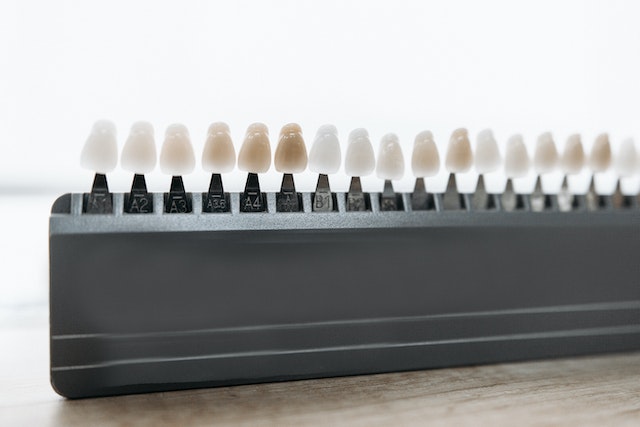
Veneers are a cosmetic dental procedure which involves permanently bonding thin, tooth-colored shells to the surface of front teeth to improve their look. This particular type of dental treatment may be used on patients whose teeth are discolored, have large gaps between them, are considered smaller than average or unusually-shaped.
In some cases they are also used on broken or chipped teeth, in which case a single veneer may be used, but in most cases people tend to get around six to eight veneers fitted to create a more symmetrical look, typically on the top teeth. Dental veneers can be custom-made to fit your unique facial features and come in a range of different styles. They are made using various materials, including:
Composite Resin
For composite resin veneers, the dentist etchs the surface of the teeth before applying a layer of the resin, adding additional layers if necessary before “curing” the veneer with a UV light. Once ready, the veneer is cemented in place (the dentist may initially use a temporary veneer until the permanent version is ready).
Porcelain Veneers
In some cases, prepwork for porcelain veneers involves the dentist grinding the teeth down under local anesthetic before making an impression of them to create a mold, which is then sent to a laboratory where the veneer is made (taking on average one to two weeks).
No-Prep Veneers
These are specific brands of porcelain veneers requiring less preparation and time. Unlike traditional porcelain veneers, these do not involve the removal of layers of tooth under the enamel. Instead, they are attached directly to the enamel, making the application process less invasive and reducing the need for anesthetics or the use of temporary veneers.
How Much Do They Cost?
As veneers are considered to be a cosmetic procedure, they are not generally covered by health insurance. According to the ADA (American Dental Association), estimated prices range between $925 and $2,5000 per tooth (if cost is a concern, ask your dentist about financing options).
Pros and Cons
Veneers are permanent and irreversible, which is why it’s important to consider the pros and cons before getting them. They will need replacing every 15 to 20 years (every five to seven years for no-prep veneers), and some report increased tooth sensitivity. On balance, they can help to improve the appearance of teeth and strengthen them while allowing for natural shape and color alterations in them.
How to Prepare for an Initial Consultation
It’s important to seek out a registered and approved cosmetic dentist to carry out your treatment. Issues such as gum disease or tooth decay can exacerbate existing oral health issues: a fully-qualified dentist will take your health needs into consideration and put these first.
Your dentist may also advise against getting veneers if you grind your teeth, bite your nails or chew items such as pens, as this can speed up the wearing process of the veneers. However, issues like this are solvable with the aid of tools such as nightguards.
It’s important to remember that the health of your back teeth impacts the teeth at the front, which is why your dentist should check your bite first. Before going for your initial consultation, ask to see a “smile catalog” and before-and-after photos of previous patients in addition to a wax mold of your veneers before they are applied.







